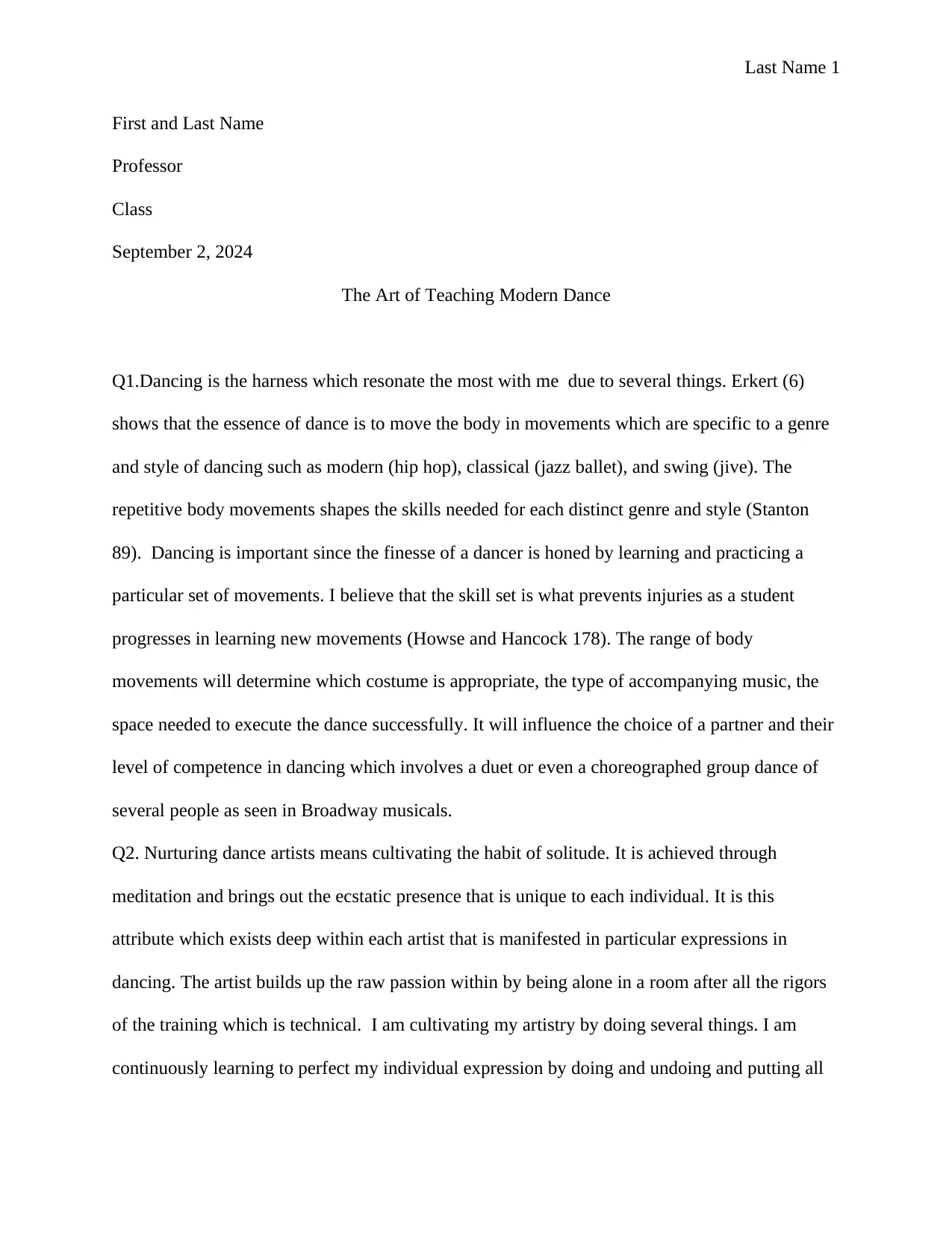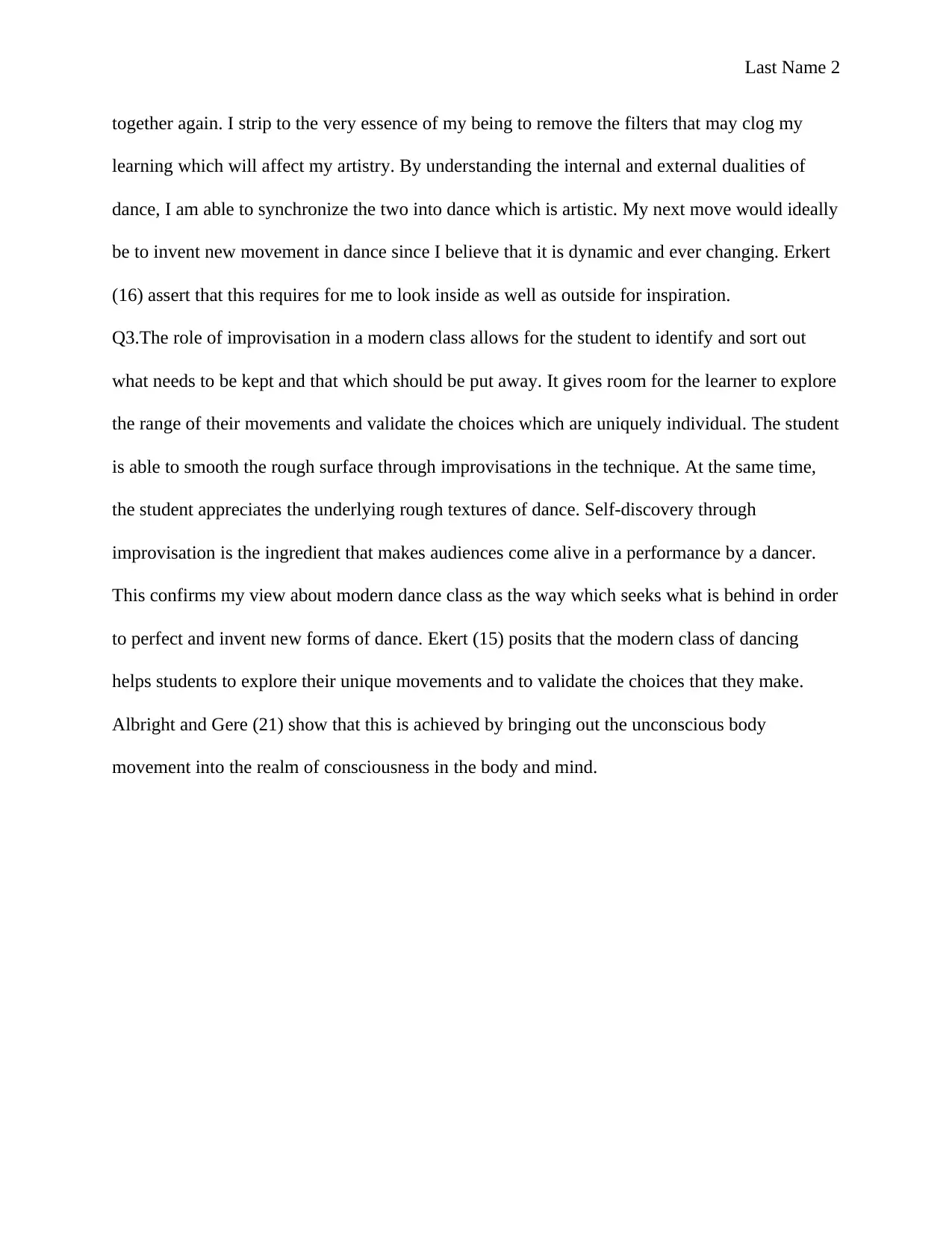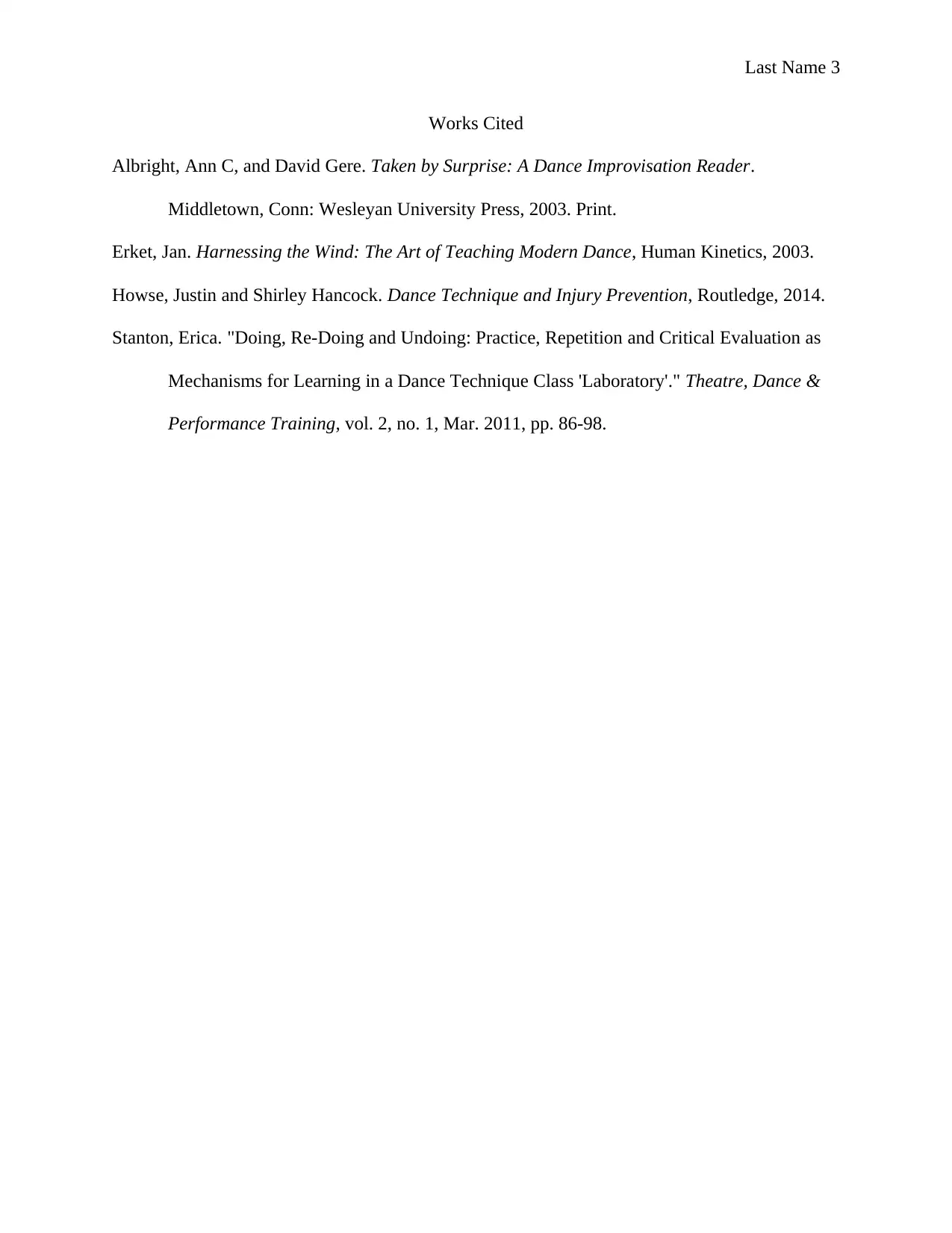Modern Dance Essay: Techniques, Improvisation, and Artistic Growth
VerifiedAdded on 2021/04/17
|3
|705
|58
Essay
AI Summary
This essay delves into the core elements of modern dance, exploring the techniques, improvisation, and artistic expression that define the art form. The author discusses the importance of specific movements, the role of practice in honing skills, and the significance of understanding the body's capabilities. The essay emphasizes the cultivation of a dancer's unique artistry through introspection and self-discovery, highlighting the role of improvisation in exploring movement and validating individual choices. The author draws on the works of various scholars to support the arguments, emphasizing how modern dance classes help students to explore their unique movements and to validate the choices that they make. The essay also focuses on the importance of nurturing dance artists through solitude and reflection to foster their unique artistic expressions and the ability to create new dance forms. The essay's central argument is that modern dance is a dynamic and evolving art form, that requires both technical skill and creative exploration.
1 out of 3




![[object Object]](/_next/static/media/star-bottom.7253800d.svg)